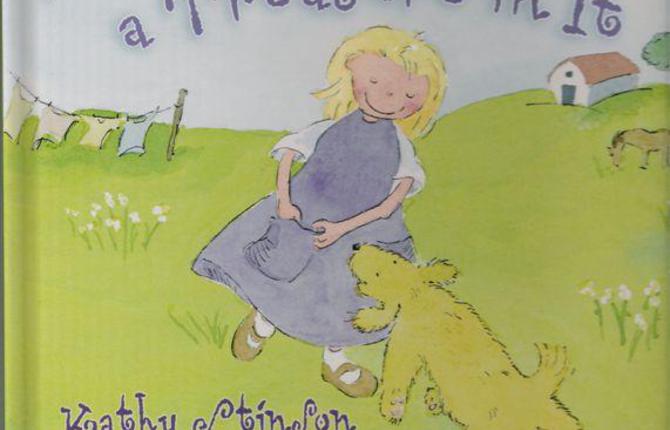
Books are vehicles on life’s highway
Stories often take readers on journeys. Whether physical or emotional, journeys can open our eyes to new possibilities.
The protagonist in Hazel Hutchins and Gail Herbert’s Mattland (Annick Press, $19.95) has already moved three times with his family, but the new place is the worst of all. The house, in the middle of a new subdivision, has no grass, no trees and no sidewalks. Nothing but mud. With no friends and nowhere to play, Matt feels a furious need to lash out, so he grabs a stick out of the debris lying around. To his surprise the stick feels comfortable in his hand. Instead of throwing it in anger, he draws a line in the mud. Rain trickles into the squiggly depression. Snake River, Matt decides watching his river flow into a nearby puddle. Turtle Lake, Matt names it as he starts moving around some of the debris. A pile of rocks becomes the Dog Tooth Mountains, a flat area with some straggly grass, the Buffalo Grasslands.
Matt surveys his creation and calls it Mattland. An outsider arrives. She offers a Popsicle stick, perfect to fence in a farm. Soon they’ve built bridges, tiny houses and stores, even a railway track. Then the rain begins. Mattland is in danger of being washed away until – suddenly many hands are building dikes.
Illustrator Dusan Petricic’s creative use of point of view allows the reader to participate fully in the creation of Mattland. Instead of an entire scene, we see only a hand carefully placing rocks and sticks and blocks of wood. At first we see only many hands pushing up mud walls, but once the sun comes out, reflected in the puddle are a ring of smiling faces. Matt has friends at last. This comforting and engrossing story about the healing power of imagination will speak to any child who has felt lonely or who has simply surrendered to the enchantment of creating a landscape out of bits and pieces in a sandbox.
In Picturescape (Simply Read Books, $9.95), Eliza Gutierrez’s nameless protagonist goes on a different kind of imaginative journey. On a visit to an art gallery he finds himself magically transported into famous Canadian paintings from Emily Carr’s west coast to William Kurelek’s prairies, Tom Thompson’s northern forests, Christopher Pratt’s Newfoundland and more. As he paddles, bikes and balloons his way through different styles and landscapes, the protagonist introduces young readers to the best of 20th century Canadian art.
In A Pocket Can Have a Treasure In It (Annick Press, $18.95) Kathy Stinson’s preschool protagonist spends a day noticing the treasures hidden in plain sight – a horse in the barn, berries in a bowl, a bird and a swing in a tree, and – most exciting of all – a blanket that has a wiggle in it. What could it be? Deirdre Betteridge’s blurry watercolours evoke the whimsicality of a four-year-old’s journey through one happy day.
Harriet Dancing (Scholastic, $19.99) by Ruth Symes with illustrations by Caroline Jayne Church also takes us on a preschooler’s whimsical journey as Harriet, a hedgehog, dances her way around her neighbourhood. After saying good-morning to her neighbours –frog, rabbit and mole—she is disappointed to find that the butterflies won’t dance with her. But her friend, Ivor, helps her to see that being snubbed by one group doesn’t lessen one’s worth in the eyes of true friends.
For children, moving can be traumatic or exhilarating depending on the circumstances. In It’s Moving Day (Kids Can Press, $17.95) science writer, Pamela Hickman shows us the same can be true for animals. The woodchuck climbs out of his winter home and trundles off to dig a summer home where there is more food. A cottontail colonizes the woodchuck’s abandoned burrow to raise her family, but when winter comes, she needs a cozier home. Off she goes leaving the space for a salamander just ready to hibernate. So goes the cycle of life in this forest as one animal after another abandons one home to search for another.
To engage the preschool audience, illustrator Geraldo Valério gives this story a picture book look by simplifying and exaggerating the characteristics of the various animals. Even so, the book presents an accurate portrayal of the cycle of animal life through the seasons making this an informative introduction to the habits of some common woodland creatures.
Life is a series of journeys. The books presented above show young readers in various ways that no matter how scary they may seem at first, journeys can lead to exciting discoveries.





